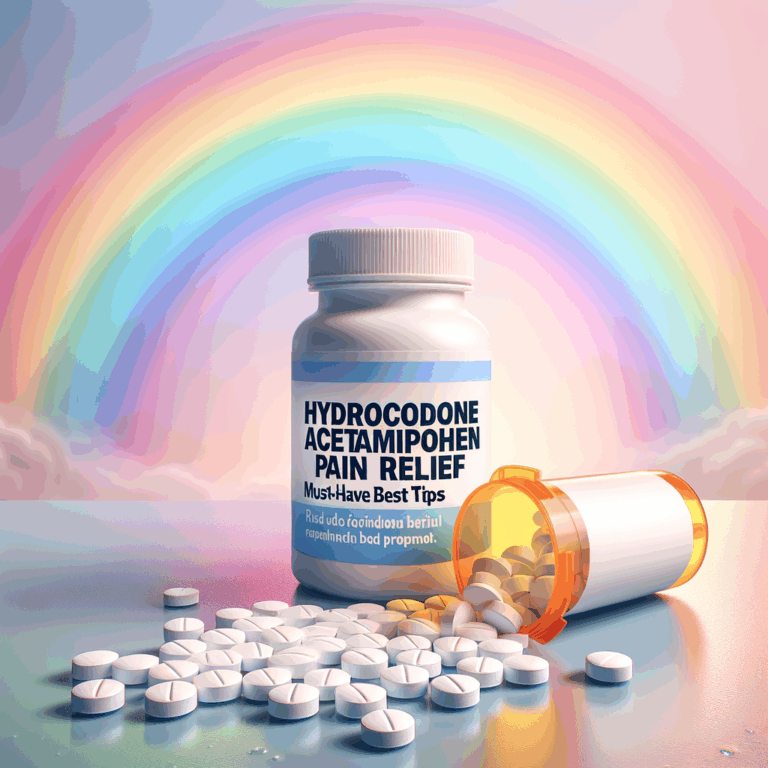- Introduction
- What Is Hydroxychloroquine?
- How Hydroxychloroquine Works
- Key Benefits of Hydroxychloroquine for Lupus
- Reduces Disease Activity and Flares
- Improves Long-Term Survival
- Protects Skin and Joints
- Supports Pregnancy and Family Planning
- Safety and Side Effects
- Common Side Effects
- Eye Toxicity: What You Need to Know
- Cardiac Concerns
- Drug Interactions and Contraindications
- Dosing and Monitoring
- Typical Dosing Table
- Monitoring Schedule
- Who Should Take Hydroxychloroquine?
- When to Start, Adjust, or Stop
- Common Misconceptions
- Practical Tips for Patients
- Conclusion
- Frequently Asked Questions (FAQs)
- References
Introduction
Hydroxychloroquine for Lupus has become one of the most trusted treatments in rheumatology. For decades, doctors have prescribed it to control symptoms and reduce risks. Patients often report better quality of life after starting therapy.
In this article, I’ll explain how hydroxychloroquine works, who benefits most, and how to stay safe while taking it. You’ll find practical tips, clear monitoring advice, and answers to common concerns. Read on to learn why many experts call it a must-have in lupus care.
What Is Hydroxychloroquine?
Hydroxychloroquine is an antimalarial drug repurposed for autoimmune diseases. Physicians commonly prescribe it for systemic lupus erythematosus (SLE) and cutaneous lupus. It also helps in rheumatoid arthritis in some cases.
Originally developed in the mid-20th century, hydroxychloroquine has a long safety record. As a result, researchers and clinicians continue to prefer it for long-term lupus management. Importantly, the drug comes in tablet form and is taken by mouth.
How Hydroxychloroquine Works
Hydroxychloroquine modulates the immune system in several ways. It interferes with immune cell signaling, reduces inflammatory molecule release, and may block antigen presentation. Consequently, the immune system becomes less likely to attack the body.
Moreover, the drug affects intracellular pH and disrupts certain cellular functions. Researchers believe these changes decrease autoimmune activity and lower flare frequency. Therefore, patients often experience fewer flares and milder symptoms over time.
Key Benefits of Hydroxychloroquine for Lupus
Hydroxychloroquine offers multiple benefits that go beyond symptom control. First, it reduces lupus flares. Second, it lowers the risk of organ damage. Third, it appears to improve overall survival for many patients.
Additionally, hydroxychloroquine helps manage skin and joint symptoms often seen in lupus. It stabilizes disease activity, allowing patients to use lower doses of steroids. Consequently, the drug helps reduce steroid-related side effects.
Reduces Disease Activity and Flares
Multiple studies show hydroxychloroquine decreases flare rates in SLE patients. Fewer flares mean less organ damage and fewer hospitalizations. Over time, consistent use helps maintain disease control.
Furthermore, the drug works as a baseline therapy. Doctors often combine it with other medicines for better results. Importantly, patients typically notice fewer sudden symptom spikes while taking it.
Improves Long-Term Survival
Evidence links hydroxychloroquine to improved long-term outcomes in lupus. Observational studies report lower mortality among patients who use it regularly. Researchers suggest several mechanisms behind this benefit.
Specifically, the drug reduces blood clot risk and controls inflammation. Both effects contribute to better cardiovascular health. As a result, hydroxychloroquine may indirectly lower death risk from lupus complications.
Protects Skin and Joints
Hydroxychloroquine often clears lupus rashes and reduces arthritis symptoms. Dermatologists use it to treat chronic cutaneous lupus. Rheumatologists recommend it for persistent joint pain caused by SLE.
Patients usually tolerate the drug well while seeing steady skin improvement. In addition, combining hydroxychloroquine with topical therapies often speeds healing. Therefore, it remains a first-line option for cutaneous disease.
Supports Pregnancy and Family Planning
Hydroxychloroquine for Lupus is generally safe during pregnancy. Studies show that continued use reduces disease flares during pregnancy. Consequently, the drug helps prevent complications tied to active lupus.
Doctors often recommend continuing hydroxychloroquine for women who plan pregnancy. The medication lowers the risk of preterm birth and disease-related problems. Therefore, obstetricians and rheumatologists usually advocate for its use.
Safety and Side Effects
Hydroxychloroquine has a favorable safety profile for most patients. Still, the drug can cause side effects in a minority of users. Common problems include gastrointestinal upset, headache, and skin reactions.
More serious complications can occur, but they remain rare. The two main concerns are eye toxicity and cardiac effects. Regular monitoring reduces risks and enables early detection.
Common Side Effects
Mild nausea and stomach discomfort occur in some patients. Usually, taking the medicine with food reduces these symptoms. Headache and mild skin rash may also develop early in treatment.
Most of these effects improve within a few weeks. If they persist, speak with your healthcare provider. Often, changing the dose or timing helps.
Eye Toxicity: What You Need to Know
Hydroxychloroquine can, rarely, damage the retina when used long-term. Fortunately, modern dosing guidelines and screening lower this risk. Retina toxicity is related to cumulative dose and treatment duration.
Doctors recommend baseline and periodic eye exams. Specifically, an initial ophthalmologic baseline within the first year helps. After five years, annual screenings typically begin. Regular tests include visual fields and optical coherence tomography (OCT).
Cardiac Concerns
Hydroxychloroquine rarely causes heart rhythm problems, such as QT prolongation. The risk increases when combined with other QT-prolonging drugs. Patients with known heart disease or on interacting medicines need careful review.
Clinicians may order an ECG before starting therapy for high-risk patients. Monitoring during treatment can help identify issues early. As always, report palpitations, fainting, or chest pain immediately.
Drug Interactions and Contraindications
Hydroxychloroquine interacts with certain medications, so check all prescriptions. For example, combining it with azithromycin or certain antipsychotics raises QT risks. Also, some medications alter hydroxychloroquine blood levels.
Avoid the drug in patients with hypersensitivity to 4-aminoquinoline compounds. Use caution in severe liver or kidney disease. Your provider will weigh benefits and risks in these situations.
Dosing and Monitoring
Appropriate dosing minimizes toxicity while maximizing benefits. Currently, experts recommend doses at or below 5 mg/kg of real body weight. This dosing guideline helps lower retinal toxicity risk.
Providers calculate doses using actual body weight, not ideal weight. They also consider kidney function when adjusting doses. Always follow your clinician’s personalized dosing instructions.
Typical Dosing Table
Below is a simplified dosing guide. It helps illustrate recommended ranges. Always follow your doctor’s exact prescription.
– Weight ≤50 kg: 200 mg daily or 200 mg every other day (individualized)
– Weight 51–70 kg: 200–400 mg daily (commonly 400 mg)
– Weight >70 kg: 400 mg daily (with careful monitoring)
Note: Use real body weight for calculations. Consult your physician for adjustments.
Monitoring Schedule
Baseline screening should include eye exam and relevant blood tests. For low-risk patients, repeat eye exams start after five years. For higher risk, begin annual screening sooner. High-risk features include high daily dose, long duration, kidney disease, or pre-existing retinal disease.
Also, monitor for blood count changes and liver function as clinically indicated. Keep a medication list with your provider to avoid interactions. Regular follow-ups help ensure safe, effective therapy.
Who Should Take Hydroxychloroquine?
Most people with SLE benefit from hydroxychloroquine treatment. Doctors often prescribe it early after diagnosis. Even patients with mild disease typically receive it because of long-term benefits.
However, clinicians individualize decisions based on comorbidities and risks. For instance, patients with certain retinal conditions may need alternative strategies. Ultimately, a shared decision helps determine the best plan.
When to Start, Adjust, or Stop
Start hydroxychloroquine soon after lupus diagnosis for most patients. Early initiation helps control disease and prevent damage. Doctors often continue it indefinitely if tolerated.
Adjust the dose if side effects occur or if kidney function declines. Stop the drug only for serious toxicity or after careful clinical evaluation. If stopping, physicians usually plan alternative treatments to maintain disease control.
Common Misconceptions
Some people believe hydroxychloroquine cures lupus. It does not cure the disease. Instead, it controls activity, reduces flares, and lowers complications over time.
Another myth links hydroxychloroquine to widespread severe heart damage. In truth, serious cardiac events are rare. Careful screening and avoiding dangerous drug combinations minimize most risks.
Practical Tips for Patients
Take hydroxychloroquine with food to reduce stomach upset. Keep a consistent daily schedule to maintain steady blood levels. Also, store tablets in a cool, dry place away from sunlight.
Share a full medication list with your healthcare team. Inform your eye doctor about long-term hydroxychloroquine use. Finally, keep regular follow-up appointments to track benefits and monitor side effects.
Conclusion
Hydroxychloroquine for Lupus stands as a cornerstone of modern lupus care. It reduces flare risk, improves long-term outcomes, and helps protect skin and joints. Most patients tolerate it well when clinicians monitor dosing and safety.
If you or a loved one has lupus, discuss hydroxychloroquine with your rheumatologist. Learn the proper dose, screening schedule, and potential interactions. With the right plan, hydroxychloroquine can provide lasting, meaningful benefits.
Frequently Asked Questions (FAQs)
1. Is hydroxychloroquine a cure for lupus?
– No. Hydroxychloroquine controls symptoms and reduces flares. It does not cure lupus.
2. How long until hydroxychloroquine works?
– Many patients notice improvement in weeks to months. Full benefits may take three to six months.
3. Can children take hydroxychloroquine for lupus?
– Yes. Pediatric rheumatologists prescribe it with weight-based dosing. They also monitor eye health carefully.
4. Is hydroxychloroquine safe during breastfeeding?
– Most experts consider it compatible with breastfeeding. Discuss risks and benefits with your clinician.
5. What if I miss a dose?
– Take the missed dose when you remember, unless it’s near the next scheduled dose. Avoid doubling doses.
6. Does hydroxychloroquine affect vaccines?
– Generally, no. However, consult your doctor, especially for live vaccines.
7. Can I drink alcohol while on hydroxychloroquine?
– Moderate alcohol use does not usually interact. Still, avoid excessive drinking and check liver concerns.
8. Will hydroxychloroquine cause hair loss?
– Hair loss from hydroxychloroquine is uncommon. More often, lupus itself causes hair changes.
9. How do doctors check for retinal toxicity?
– Standard screening includes visual field testing and OCT imaging. These tests detect early changes.
10. Can hydroxychloroquine prevent lupus entirely?
– No evidence supports prevention in people without lupus. The drug prevents flares and complications in diagnosed patients.
References
– American College of Rheumatology. “2020 American College of Rheumatology Guideline for the Management of Systemic Lupus Erythematosus.” https://www.rheumatology.org/Practice-Quality/Clinical-Support/Clinical-Practice-Guidelines/Systemic-Lupus-Erythematosus
– Marmor MF, Kellner U, Lai TY, Melles RB, Mieler WF. “AAO recommendations on screening for chloroquine and hydroxychloroquine retinopathy (2016).” Ophthalmology. https://www.aao.org/clinical-statement/retinopathy-chloroquine-hydroxychloroquine
– Ruiz-Irastorza G, Ramos-Casals M, Brito-Zerón P, Khamashta MA. “Clinical efficacy and side effects of antimalarials in systemic lupus erythematosus: a systematic review.” Ann Rheum Dis. https://ard.bmj.com/content/annrheumdis/69/1/20.full.pdf
– Lupus Foundation of America. “Hydroxychloroquine and Lupus.” https://www.lupus.org/resources/hydroxychloroquine-and-lupus
– Gupta A, Crarey J, et al. “Hydroxychloroquine in systemic lupus erythematosus: An update.” BMJ. https://www.bmj.com/content/bmj/368/bmj.m974.full.pdf
– Schrezenmeier E, Dörner T. “Mechanisms of action of hydroxychloroquine and chloroquine.” Immunology Letters. https://www.sciencedirect.com/science/article/pii/S0165247816300709
Note: This article provides educational information, not medical advice. Always consult a licensed healthcare provider for personal care and treatment decisions.



